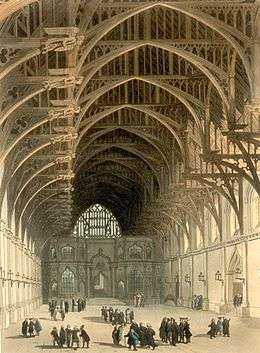Images of England
Images of England is an online photographic record of all the listed buildings in England at the date of February 2001. The archive gives access to over 323,000 colour images, each of which is matched with the item’s listed designation architectural description.[1]
This ‘snapshot’ is not an up-to-date record as it does not include all listed buildings, only those that were designated as at February 2001 and it is not updated as listing details change.[2]
Purpose
Images of England was a stand-alone project funded jointly by English Heritage and the Heritage Lottery Fund. The aim of the project was to photograph every listed building and object (some 370,000) in England and to make the images available online to create, what was at the time, one of the largest free-to-view picture libraries of buildings in the world.[3][4] It is part of the Historic England Archive of England’s historic environment.[5]
The project started in October 1999 and the final images were uploaded in September 2008. There are 323,107 images online.
The archive has deliberately not been updated, so any changes to the buildings since the photographs were first taken are not recorded. The official up-to-date list of all listed buildings in England is found on the National Heritage List for England.[6]
Contents
The searchable database includes a range of items, not just houses and churches. The term ‘Listed Building’ includes war memorials, letter boxes, bridges, tombs, telephone boxes and milestones and much more. Each entry on the database consists of a single, representative photograph and a text listing, written by historic building experts within English Heritage.[2]
However, some records state ‘no image available’. This may be for a variety of reasons, e.g., because the building no longer existed, it could not be found or the photograph did not pass the quality assurance process. Pictures of prisons had a different treatment as it is illegal to take or attempt to take a photograph of any building that is, or is associated with, one of HM Prisons. Photographs of Listed Prisons were taken with permission from the Prison Service as part of a major recording project by the Royal Commission on the Historical Monuments of England (merged with English Heritage in 1999).[2]
In some instances a house owner did not give permission for the photograph to be taken on their private land, or may have asked to be included in the exemption scheme.[2] In early 2002, the Country Landowners Association (now Country Land and Business Association) raised concerns over the security implications of photographs of residential properties made available on the Images of England website.[7] In response, English Heritage introduced an exemption scheme whereby owners of listed buildings with a maximum of two households were able to register for an exclusion from the database until 2013. The photographs of the properties were still taken, where visible from public land, and are stored in the NMR archive.
Project methodology
Hundreds of volunteer photographers, many from local camera clubs or the Royal Photographic Society, were allocated a number of listed buildings to record in their area. They were briefed to only take one ‘defining image’ of each listed item.[8] Each 'defining image' aimed to show the architectural character of the building, indicate its historical function, suggest its context, and provide a truthful high quality image with as much visual information as possible. The photographers were restricted to one frame per building and used standard 35mm photographic equipment and colour negative film. hdimagez
Volunteers were given film, processing and travel expenses and retain the copyright to their images. Each photograph is credited to the relevant photographer on the site.[2] The photographs had to be taken from publicly accessible land (unless permission was granted to photograph from private land).
Many of the listed structures were hard to photograph due to their size or location. This meant that, in some circumstances, some pictures are not ideal, but have been included anyway to provide as comprehensive a record as possible.[2] Much of the success of the finished project is due to the enthusiasm and thoroughness of the volunteers who hunted down buildings and tried to find the best angle for the photograph in often not ideal circumstances.[8]
See also
References
- ↑ "English Heritage-Images of England". Building Conservation. Retrieved 22 July 2011.
- 1 2 3 4 5 6 "The Images of England project". Retrieved 22 July 2011.
- ↑ "Images of England". The Guardian. 26 September 2007. Retrieved 22 July 2011.
- ↑ "Images of England: English Heritage National Monuments Record". Retrieved 22 July 2011.
- ↑ "Historic England Archive". Retrieved 25 April 2015.
- ↑ "The List". Historic England. Retrieved 25 April 2015.
- ↑ "CLA wins exemption for listed house owners". 21 May 2003. Retrieved 22 July 2011.
- 1 2 "1999 Images Of England Project". Retrieved 22 July 2011.
